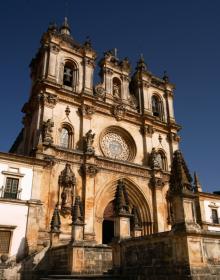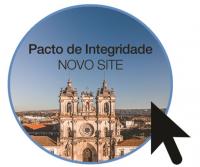- HOME
- MONUMENT
- VISIT OUR MONUMENT
- HERITAGE LEARNING
- ALCOBAÇA
- MONASTERIRES ROUTE

Before Cistercian Order
The municipality of Alcobaça is part of the coastal Estremadura region that lies to the north of the River Tagus. The region has abundant evidence of human settlement down through the ages.
There are abundant vestiges of the Palaeolithic period in Castanheira and Montes, and of the early farming and shepherding communities that occupied the caves in Carvalhal de Aljubarrota. These caves – Cabeço da Ministra and Calatras – were also used as burial grounds or, in some cases, as temporary shelters.
There is also evidence of the existence of primitive Chalcolithic settlements from the 3rd millennium B.C., namely in Ervideira, the Carvalhal de Aljubarrota caves and in Algar de João Ramos. Archaeological finds such as copper axes and spearheads have been found in Carvalhal de Turquel, Évora de Alcobaça, Fonte Santa, Casais de Santa Teresa, Carris and in cave X in Cabeço de Rastinho.
Before the Bronze Age, between the 1800/1700 B.C and the 8th/7th centuries B.C, the Chalcolithic period reveals a region with a strong substratum in terms of use of copper. The burial customs indicate the re-use of previously used burial places, particularly in Carvalhal de Aljubarrota.
From the late Bronze Age there are finds that document cultural links with what became known as the Atlantic Bronze Age communities, of which the two-ringed axes found in Carvalhal de Aljubarrota, Fonte Santa, Carris and the Redondas cave are prime examples.
From the 1st Iron Age – between the 8th century B.C and the mid-5th century B.C. – important finds were made in Bárrio, namely fibulas (calf bones) found in Parreitas, which have been dated to the 8th/7th centuries B.C.
From the 2nd Iron Age, a period marked by significant ethno-geographic alterations in the region caused by the dislocation of peoples of Indo-European origins eastwards, we find vestiges of new settlements: Collipo (São Sebastião do Freixo) and Eburobrittium (outside Óbidos).
These new settlements played a decisive role in the introduction of technical innovations (metal working and iron).
The Roman presence in the Alcobaça region, which was more permanent from the 2nd century B.C. onwards, is documented by several valuable finds, namely in Parreitas village, in Póvoa de Cós and in a number of minor settlements that are still awaiting archaeological investigation.
The presence of the Visigoths is most visible in São Gião da Nazaré, while the presence of the Moors is best documented in Alfeizerão and the Tower of Dom Framondo.
As far as Alcobaça castle is concerned, there is no consensus as to the original structure, which is attributed by some scientists to the Visigoths. However, there is a Moorish Al-barran tower. During the Christian reconquests the castle was taken by King Afonso Henriques and subsequently repaired and reinforced. Between 1191 and 1195, it was captured once more from the Moors by King Sancho I, who rebuilt it to protect the settlements and encourage occupation of the surrounding lands.
The Cistercian occupation, which began in 1153 with recognition of the Alcobaça coutos* by Afonso Henriques, left a definitive mark on the destiny of the settlement and development of the region.
The focal point that occupation was the Monastery of Alcobaça itself, which was extended in the territory through granaries and farms, making it possible to conquer hills and valleys as far as the sea, and making for a prosperous region that today remains abundant, fertile and emblematic.
* Translator’s note: a couto was a special set of territories which, under the feudal system, were exempt from the authority of the King and where special economical, political and judicial regimes applied.
SERVICES - ACTIVITIES




